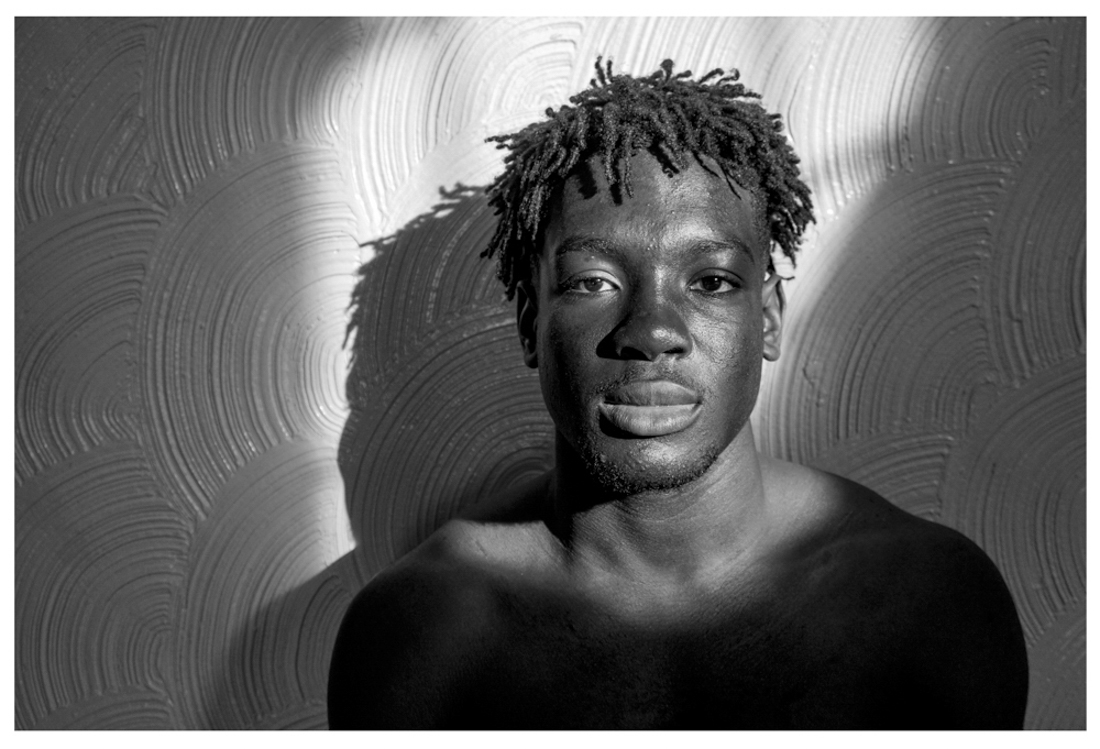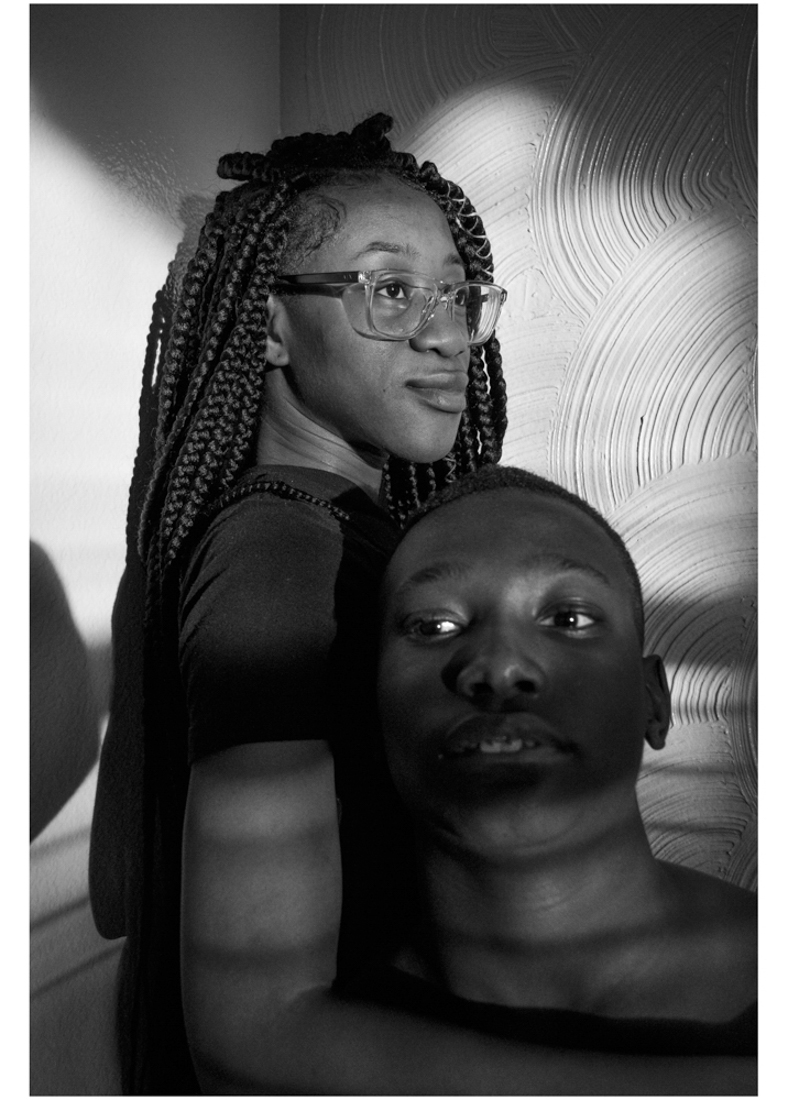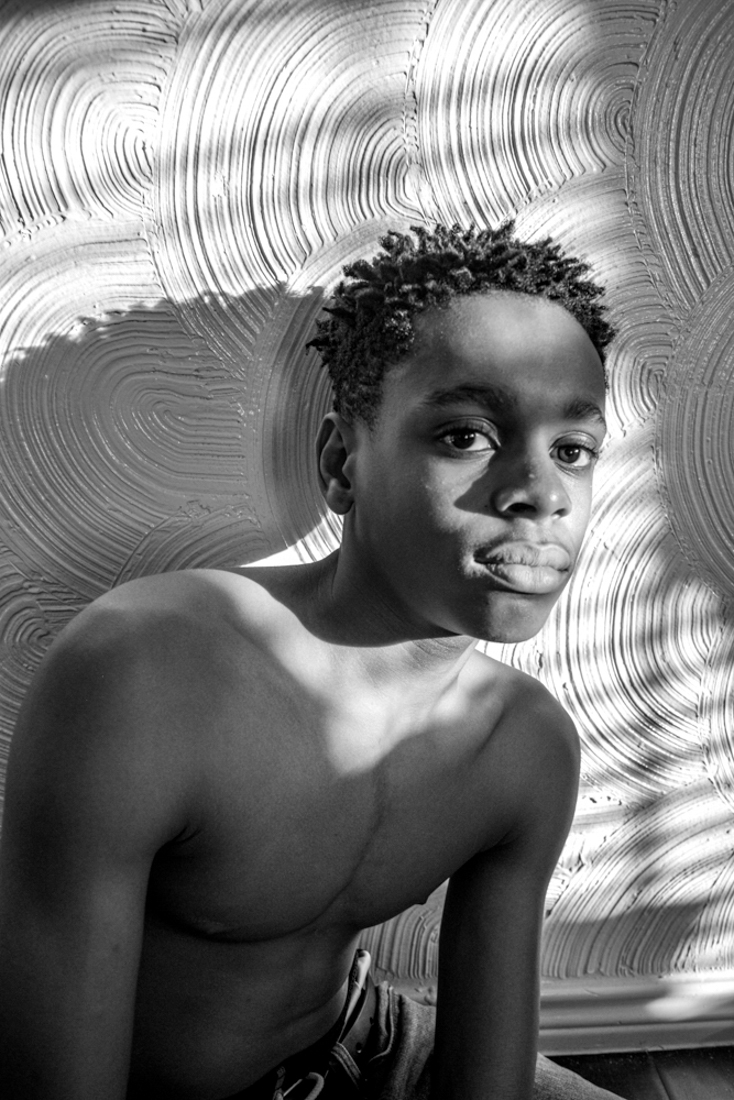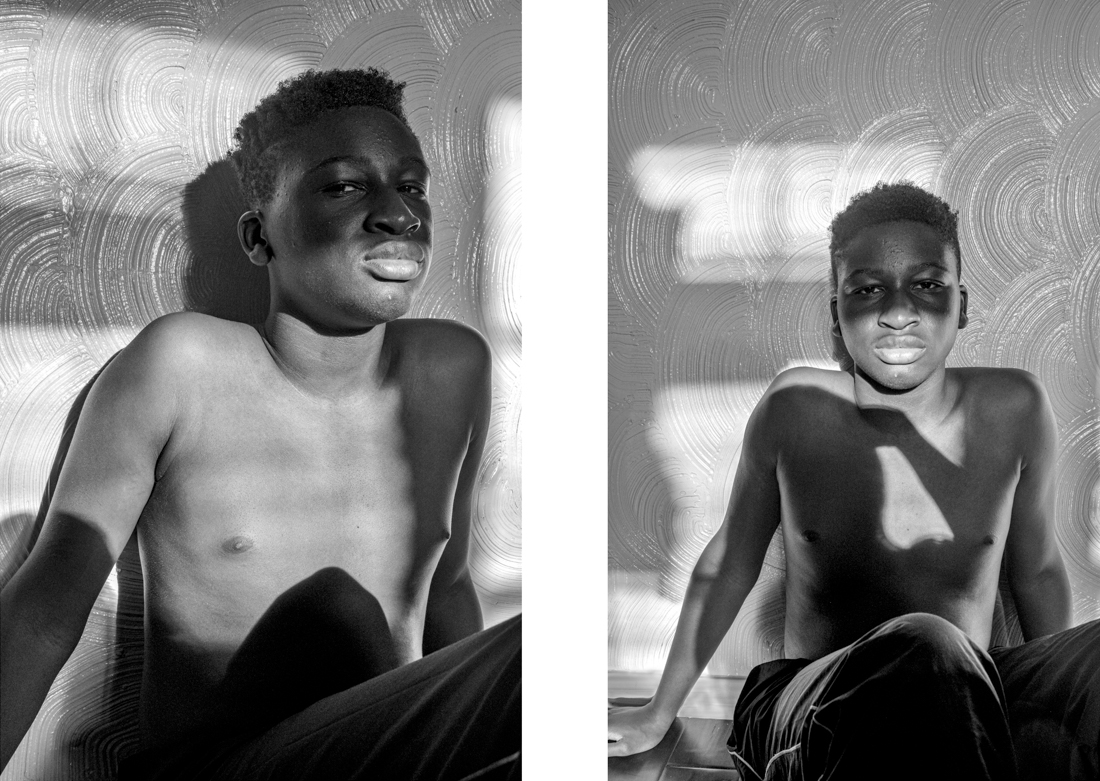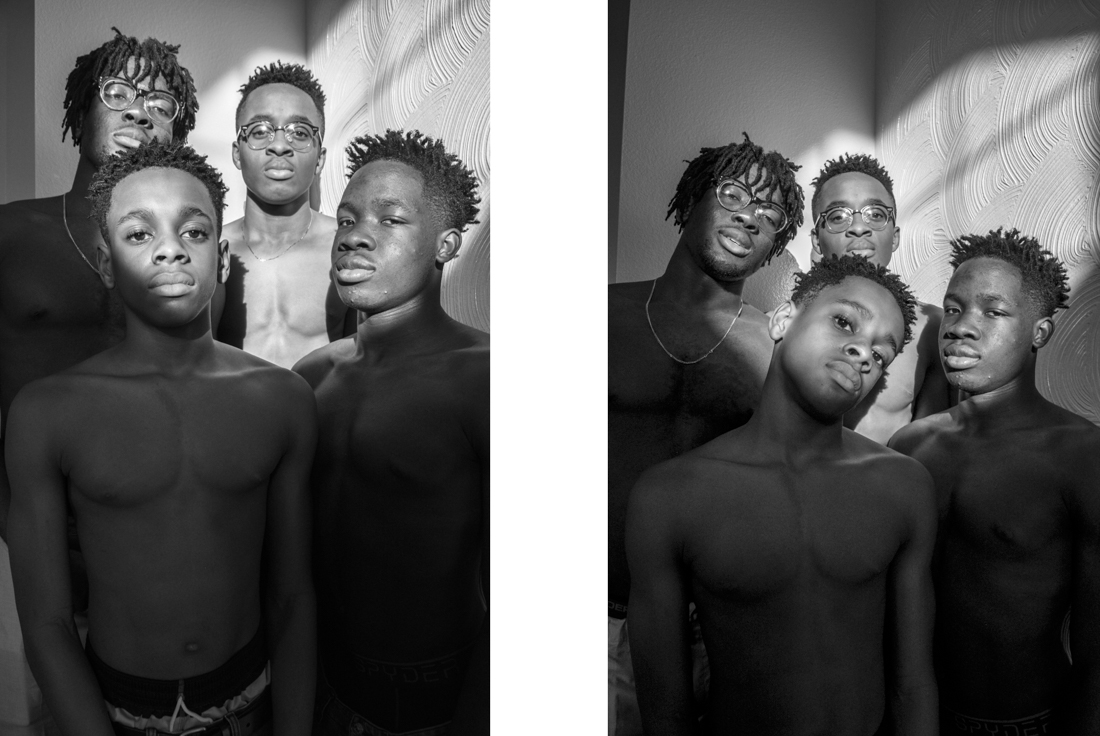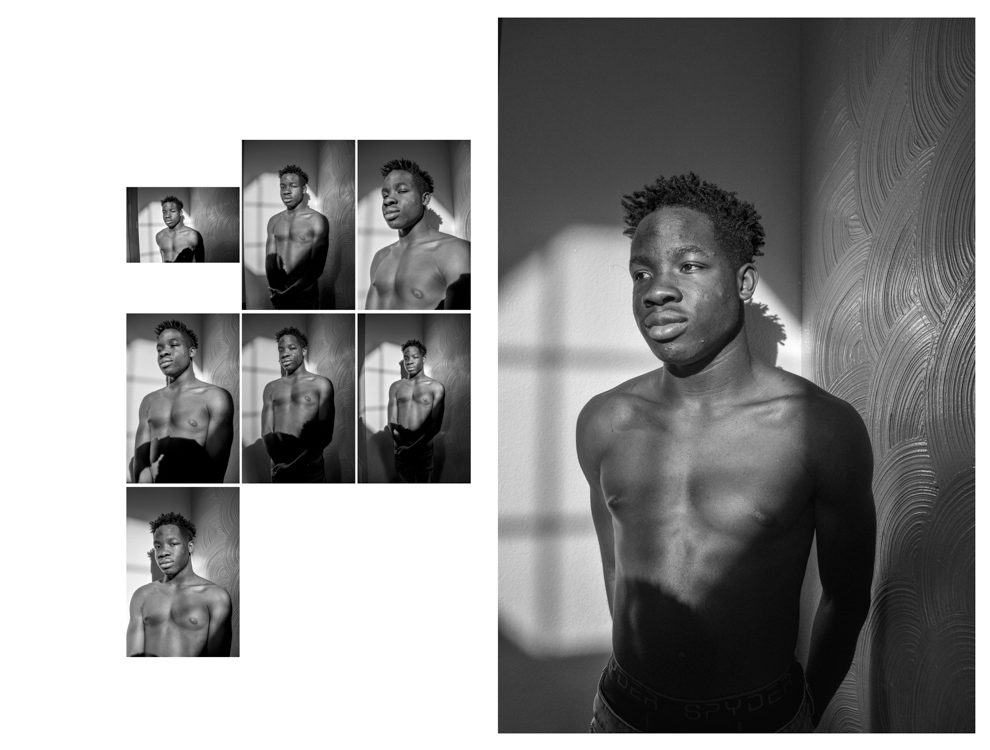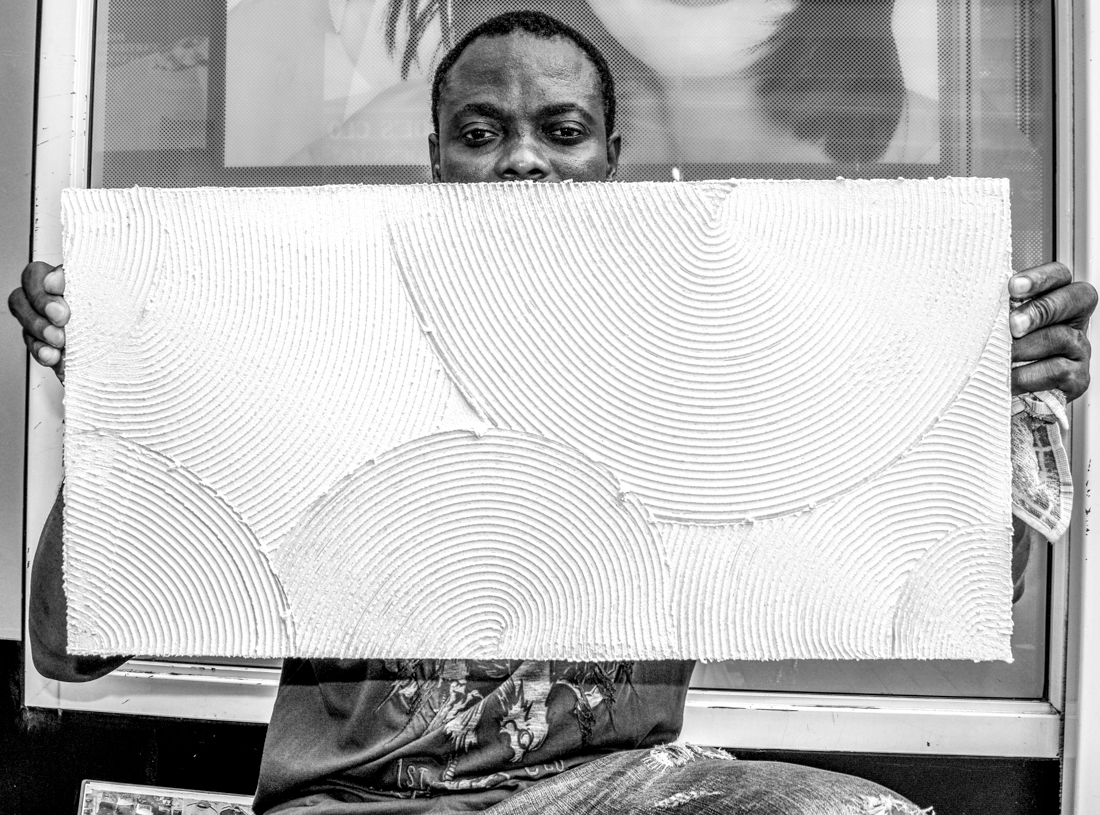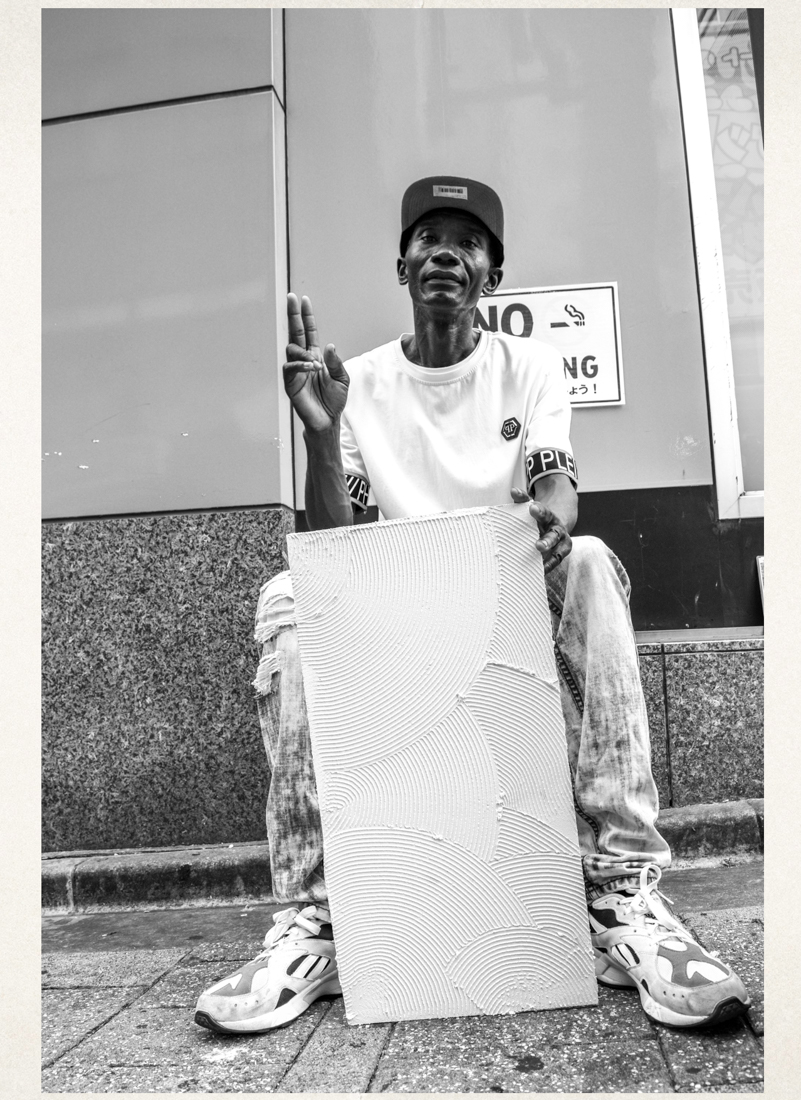When making a portrait I attempt to make emotional and physical representations of the body positioned in front of the lens. I attempt to create a type of exchange between the viewer and the body within the image, even if only momentarily. I hope to extend the viewer an opportunity to take this exchange back into the world, and engage with it with new perspectives in mind. My desire is to remain hopeful, and so I make portraits with hope within them. This type of hope is a hope only one who’d truly loved could carry. I strive to create a palpable sense of what a young black boy looks like. When he’s eleven, when he’s twelve, fourteen, sixteen.. The works asks for a few things. One of them being to sincerely, honestly, and truthfully present to the world examples of who’s lives are being stolen. Each of these portraits was made as an extension of protection—for any and every black body lost within the cruelty of a broken world. There, within those four walls, everyone was safe.
But what would happen if those four walls existed without limits or boundaries? What would happen if they, like the pattern of which they hold, existed within and upon international waters so to be gifted to the next searcher of hope? Would pain turn into reverence? Would fear depart as swiftly as it arrived, even if its remnants brooded over an incoming generation? Would stories of once existing without refuge become tales of faith? Would the paradigm shift as each tormented reality was awakened by the call of a hopeful future?
Here in this project we see black men, both young and old, within images that hold a symbol of peace, calmness, protection, power, and resilience. Originating in Japan, the segaiha pattern transcends saltless-ness and separation, while still withholding importances of culture and self. Within this project I attempt to illustrate a type of understanding of the pattern’s ability to bring together migrant and first-generation Africans with the sole purpose of highlighting humanity and visuality. I attempt to reveal a pattern native to one land invite inhabitants of lands foreign to its culture and nature to occupy seats at a table once forsaken. I attempt to portray a country adamant about preserving its own cultural identity open its gates to another in need. And lastly, I attempt to portray the affects this invitation has on an incoming generation. Though formerly believed to come from a land of which they do not exist upon, we witness them enter into an understanding of the fact that their native land has footsteps of foreign inhabitants upon its canvas.
